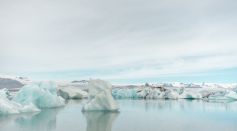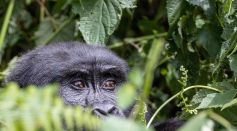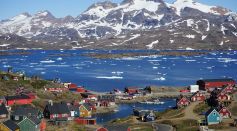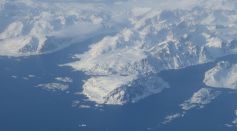Tags: Arctic

'Quest' Vessel of Ernest Shackleton Discovered After 60 Years on the Seafloor Off Newfoundland Coast

Reverse Melting? Scientists Work on Refreezing Arctic Region That Is Melting Away Due to Global Warming
Arctic's Polar Vortex Swirls in Wrong Direction, Sparking Climate Concerns

Methane Reserve Discovered Deep Beneath Arctic Permafrost; Experts Warn About Climate Feedback Loop if It Escapes
Why Are the Poles So Cold? Exploring the Geology of Arctic and Antarctic Regions

Polar Stratospheric Clouds Could Be the Reason Why the Poles Are Warming So Fast, Study Reveals
Spawning Chum Salmons Discovered in Arctic Territories Suggest Transformation of Ecosystems Due to Climate Change
Tiny Ice Mouse With Teeth As Big As a Grain of Sand Thrived Alongside Dinosaurs in the Frigid Ancient Arctic Alaska, Study Reveals
Narwhals Suffer From Noisy Ships and Airguns in the Arctic, New Study Reveals
NASA’s Aqua Satellite Captures Giant Ice Swirls Around Russian Peninsula in Arctic

World's Biggest Known Logjam Incredibly Stores 3.4 Million Tons of Carbon, Plays an Underestimated Role in the Cycle, Study Says
Earth’s 2 Poles Make Bizarre Sound; Arctic, Antarctic Noises Include Singing Ice, Seal Sounding Like It’s in Space & More

Rainbow Clouds Spotted at Multiple Places in the Arctic; What Caused This Jaw-Dropping Spectacle?

52-Million-year-old Fossils Reveal the First Primate-like Animals Known To Have Inhabited the Arctic

Beavers Are Transforming the Alaskan Tundra Like Wildfire as Damages Become Visible From Space

Greenland's Ice Loss May Be 100 Times Faster Than Initially Thought as Warm Ocean Water Slowly Melts Glaciers Underneath

2-Million-year-Old DNA From Ancient Sediment in Greenland Reveals a Lost Arctic World
Climate Change Could Result in Numerous Hybrid Species in the Arctic; Here Are Some of Them

The Arctic, a ‘Fertile Ground’ for the Next Pandemics With Climate Change Increasing the Risk of Viruses, Arising Sooner Than Later

Melting Permafrost Soil Rapidly Warming the Arctic Region May Emit Greenhouse Gas as Large Industrial Countries [Study]
Most Popular

Avi Loeb Says 3I/ATLAS Has 40% Chance of Being Alien Tech—Here's Why

Supermoon 2025: November 5 Delivers 14% Bigger, 30% Brighter Lunar Show

Hellfire Missile Video Reveals MQ-9 Reapers Being Used for Aerial Combat

Nvidia's Jetson Thor Could Make Humanoids Smarter Than Ever





